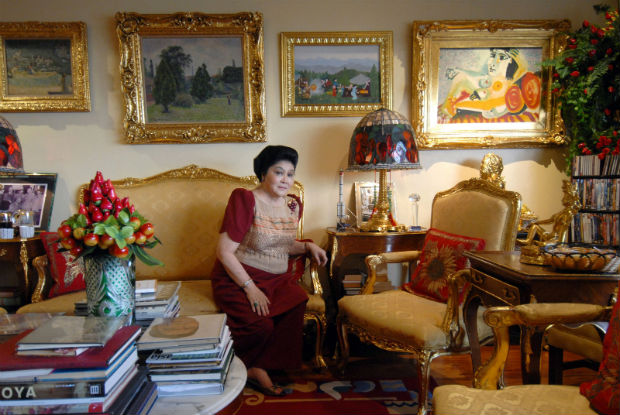
The Presidential Commission on Good Government (PCGG) today announced that on 19 May 2016, it will again present additional evidence in the case filed before the Sandiganbayan, seeking to recover more than 200 artworks believed to be in the possession of the Marcos family and which form part of the ill-gotten wealth amassed by them in the two-decade Marcos regime. The case was filed through the Office of the Solicitor General (OSG) under the leadership of Solicitor General Florin Hilbay, with the hope that the Marcoses will no longer contest it.
The initial presentation of its witnesses lined up to prove that such paintings were indeed acquired and in possession of the Marcoses commenced last March 17. Meanwhile, the Marcoses were given a period of 30 days to comment on the Republic’s motion.
A number of the paintings, which disappeared at the height of the 1986 EDSA revolution, have been previously sighted to be prominently hanging and displayed in the residences of the Marcos family. These paintings include works by Michaelangelo, Monet, Picasso, Rembrandt, Van Gogh, Degas, Mondrian, Gobillard, Francis Bacon, Robie, Sisley, Chagall, Goya, Matisse, Cezanne and other known masters. The Marcoses and their agents purchased the paintings from known galleries in the United States and Europe such as Hammer Galleries, Knoedler-Modarco S.A., Stair-Murdock Fine Arts and Marlborough Fine Art.
By any stretch of their known income as shown by their Statement of Assets, Liabilities, and Net Worth (SALN), the Marcoses could not have possibly afforded to legally acquire all of these paintings and other decorative arts by means of their own income and related resources. According to the legal documents and evidence in PCGG’s possession, the paintings were acquired during the height of the Martial Law in the 70s, a period when there were no credible financial disclosures made by the Marcoses on their family finances and spending. It is important to note that this time period was concurrent with the crisis in the Philippine economy reaching its peak.
The Marcos family’s record of illegal accumulation of wealth, illegally acquired assets and diversion of the Philippine people’s money is indisputable. The acquisition cost in 1970’s of these paintings were valued in excess of USD $24 million at that time. Factoring inflation, that amount today is equal to almost USD $150 million (P7 Billion). But in the conservative estimate of the PCGG, the paintings now amount to $300 million-$500 million (P14 Billion-P23 Billion).
As the Filipino people suffered the economic crisis of the 1970’s, the Marcos family amassed a collection of artworks including more than 200 paintings of historical value and international masterpiece quality that can rival any other country’s national gallery.
The efforts of the PCGG in filing the case began during the time of then Chairman Andres D. Bautista, spearheaded by former Commissioner Maita Chan Gonzaga. It took the new PCGG more than five years to gather the necessary documents, evidence and testimonies before the OSG was able to file a strong case on behalf of PCGG. The PCGG lauds the office of the OSG for painstakingly putting together the various pieces of evidence and coming up with the case to recover the paintings.
PCGG Chairman Richard T. Amurao said the length of time to prepare the case has not dampened the government’s desire nor its ability to make the Marcos family accountable for the missing paintings and to return these paintings to their rightful owners, the Filipino people.
Chairman Amurao added, “It is our unending belief that there should be no “statute of limitations” on justice. And we will continue our pursuit of justice as long as we shall be so empowered.” The filing of this case is a part of the Commission’s continuing efforts to allow the Filipino people to remember the excesses of the past and to recover ill-gotten assets rightfully belonging to them.
As part of its efforts to intensify the search for the vast collection of artworks worth millions of dollars, the PCGG, in this connection recently commenced the Missing Art Movement thru its website (missingart.ph) where the general public and global art world can inform the Philippine government should they have knowledge of any of the more than 200 missing artworks. So far, there have been some initial leads from the public about a few of the missing paintings.
The PCGG encourages the public to help in getting back the missing artworks so that the true owners who have funded these paintings unknowingly, the Filipino people, can genuinely benefit therefrom. This is the continuous pursuit of the Commission’s main thrust, “Recovering Integrity,” as it commemorates its 30th anniversary.



